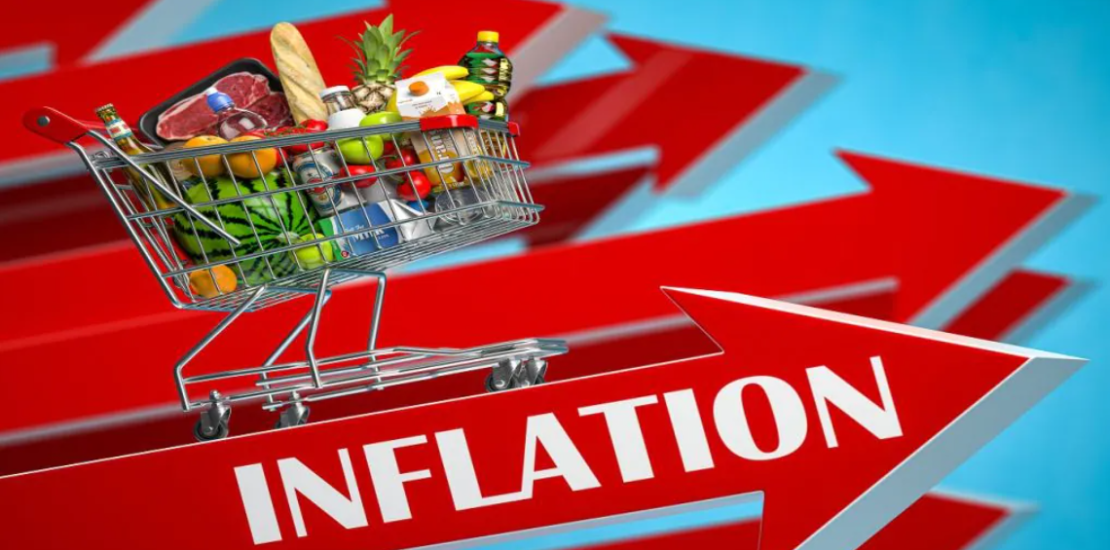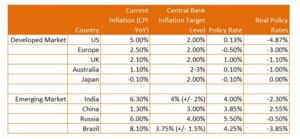- June 30, 2021
- Posted by: Amit Pabari
- Category: Economics

At the beginning of an economic upturn, apart from the lower base effect; loose monetary policy during crisis times eventually ends up increasing the consumers’ ability to pay for goods and services. This leads to Demand-Pull inflation. After the evolution of COVID vaccination, the demand is expected to return to the pre-pandemic level. But along with that due to supply disruption across the world, the market is still struggling with the issue of the higher cost of production amid rise in raw material prices, shortages of labor, higher fuel prices, etc. This can be considered as cost-push inflation.
The tagline is- “The market is currently experiencing both, Demand-Pull and Cost-Push inflation.”
In the case of a developed market like the US with 5 percent inflation- the highest since Aug 2008, should be in hurry to wind up its ultra-loose monetary policy and move towards a rate hike if the economy permits. However, Fed will surely look upon the “Phillip curve” – inverse correlation between unemployment and inflation rate which seems currently distorted in the short run as the unemployment rate is still near 5.8 percent, which is not even closer to the pre-pandemic rate of 3.5 percent. But, Fed could continue to reiterate their statement on the robust job market and wait until Dec-2022, where the market is currently pricing in a 0.25 percent rate hike. Hence, we are expecting that the US will be the first in the race to go for a ‘Hawkish Hike’, followed by other central banks but in a lag manner as they are still having a view of transitory inflation and trying to cope up with delay in reopening and recovery.
The UK is currently facing the highest cases since the end of January, and now they are expected to further delay reopening from 19th July by another 1-2 months. Looming Delta variant probably renewed BoE’s dovish stance on their monetary policy and expected to remain sticky for long despite having above-target inflation levels. The UK growth in Q1 2021 had been vulnerable- down by 6.1 percent, disallowing to even think of ‘think of tapering’. Over to Europe, the inflation figure is just above the central bank checkpoint, but some European countries too are facing restrictions again and expected that the Delta variant will become the dominant virus strain in Germany by summer.
Apart from this western developed market, Japan is one of the deflationary led countries which is still not able to sustain well into positive territory. Both demand-pull and cost-push inflation were not enough for Japan to get out of its decade-long deflationary issue. Australia being a commodity-linked country having an inflation of around 1.1 percent, or it is still below the central bank’s target of 2 percent-3 percent. In the Aussie’s case, stronger commodities push up AUD and that could act as a natural dampener for inflation. Their concern is not underrated CPI but their concern is HPI-Housing price inflation, especially during the boom cycle. So, apart from US, all other DM will not turn for a tightening of their policy and hence remain exposed to stronger dollar.
Another tagline in the current context is that “Inflation in isolation will not work as growth and unemployment story needs to be well supported”. All in all, inflation being a boon to the developed market they will not be able to turn hawkish unless supported by growth and job market.
Let’s take a flight to the emerging markets and check the inflation case. In India, inflation was seen quoting in the central bank’s range of 2-6 percent from Dec-2020 to Apr-2021. But it escalated out of the range in May-2021 at 6.3 percent on rising commodity prices and domestic supply disruption. The government is unveiling packages to support those sectors which were badly hit after COVID wave-2 and likely to remain dovish as the vaccination rate is still under 20 percent. Hence, Rupee is likely to feel a hit from stronger USD and weaker domestic fundamentals and is expected to continue to trade on a depreciating note towards 75-75.20 over the medium term.
China which was barely hit by COVID compared to other global nations has under-controlled inflation at 1.3 percent, or below the central bank’s target of 3 percent. Their growth story has been remarkable as it is one of the only emerging market countries who is having back to back four-quarter positive GDP rate. And hence, the policy stance has been kept stable by PBoC to support economic activity.
Russia that gave up in front of rising inflationary pressure, has hiked interest rates by 1.25 percent since March to currently at 5.5 percent. And Brazil has raised its benchmark interest rate for the third time this year to 4.25 percent. As both countries’ inflation was going out of their hands, the central banks with no option left to curb down the effect of the price rise they had to go with a rate hike. In nutshell, rising inflation pressure in the emerging market could be a curse and impact the growth story. Furthermore, it could erode real yield, which global fund allocators closely watch when risk-on sentiment flows into the emerging markets.

Outlook:
Overall, for developed markets, inflation can be considered a boon as that is the result of their revival of growth. But for the developing markets, inflation could be harmful to the growth and could not attract flows. In the current scenario, a higher vaccination rate, smooth reopening and Biden’s infrastructure plan could prove as a strong pillar for US growth. And hence, we expect dollar demand to remain on the cards and Fed to turn hawkish and while DM central banks to remain dovish over the medium term. This will take the US dollar index towards the target of 94.30 to 94.70 levels. Other EM currencies that are caught up in the inflationary pressure will have to either go with an early rate hike or struggle at the current rate to support the government’s fiscal plan. Hence, we expect a bumpy road ahead for the EM currencies and likely to remain on a depreciating mode.
-Amit Pabari is managing director of CR Forex Advisors. The views expressed are personal.
Leave a Reply
You must be logged in to post a comment.

